Preventing genetic diseases in dogs, our best friends
How genetics and DNA testing can pave the way for more puppies to be born free from hereditary illnesses
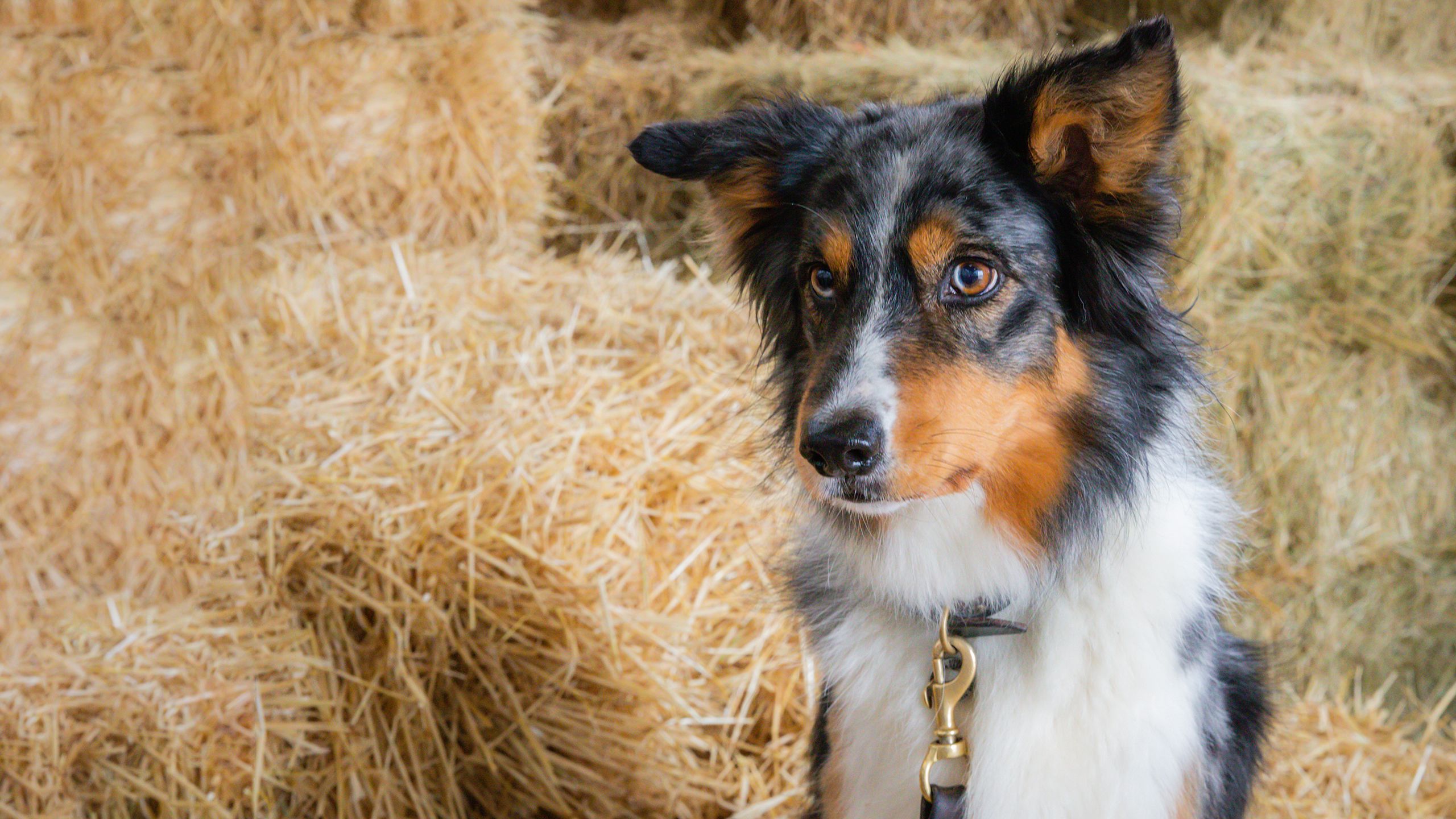
“Dogs are special; they were the first species to be domesticated and for the past 30,000 years, have evolved alongside humans,” says Dr Cathryn Mellersh, a senior research associate at the Department of Veterinary Medicine. “They read our body language, show empathy when we’re upset and often prefer the company of a person over their own species – all testament to how intertwined we are with the domestic dog.”
“But the health and wellbeing of many dogs today has been compromised because of how they have been bred by humans. I believe that we owe it to dogs to do right by their species.”

Cathryn Mellersh by Lloyd Mann
Cathryn Mellersh by Lloyd Mann
Mellersh has dedicated her life to canine genetics and her passion is palpable. During the 1990s she identified some of the earliest genetic markers (a DNA sequence with a known physical location on a chromosome) in dogs and was part of the team who produced the first map of the canine genome.
She went on to establish and lead a research group investigating the genetic basis of some of the most painful and life-limiting inherited diseases including painful and blinding eye diseases, epilepsy, and intervertebral disc disease (IVDD) which in the most severe cases can result in paralysis.
Testing alongside breeding
Mellersh’s research group identifies the genetic variants and mutations that underpin these serious inherited diseases and develops tests to spot which dogs carry these. To date the researchers have pinpointed more than 30 genetic mutations that affect around 50 different dog breeds. As a result of their work, hundreds of thousands of dogs across the world have been screened for these mutations, meaning that thousands more can be born free of debilitating diseases.
“It's about prevention rather than a cure,” explains Mellersh, who spends a lot of time working with breeders to help them understand how they can use DNA tests to make decisions on which dogs to breed so that hereditary illnesses are not passed on to puppies. “The ultimate aim is to breed-out inherited diseases.”

Mellersh explains that mutations in populations can decrease by as much as 90% when testing is used alongside breeding. “For the mutation to decrease in just a few generations to almost nothing is really significant,” she says.
Records from The Kennel Club, an organisation that holds the largest register for pedigree and crossbreed dogs in the UK, show that 52,000 dogs have been tested for 22 different mutations that Mellersh’s group identified, in 46 breeds. Overall, 380,000 Kennel Club dogs are registered as ‘hereditary clear’, meaning owners can breed them safe in the knowledge that illnesses won’t be passed on.
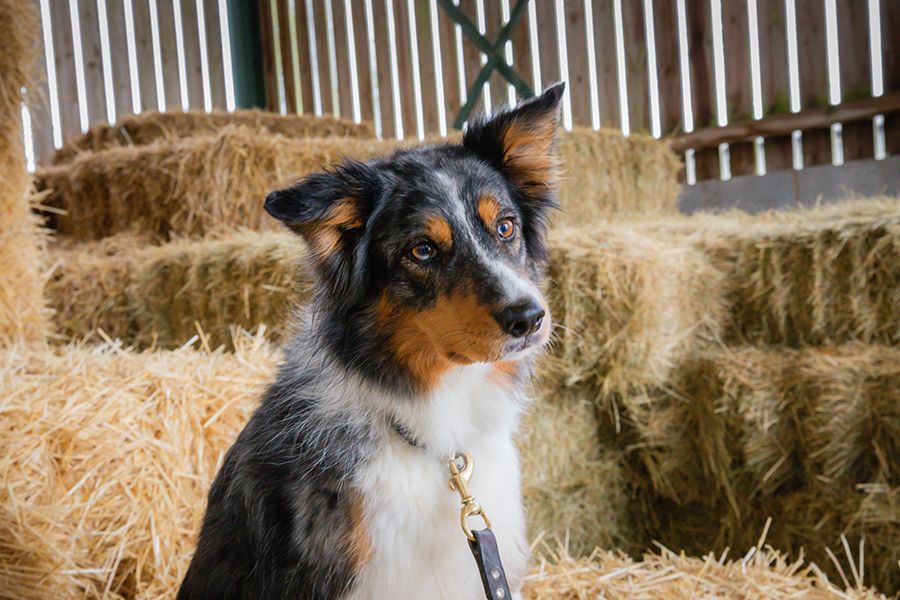
Border Collie, Kaia by Lloyd Mann.
Border Collie, Kaia by Lloyd Mann.
In 2020, Mellersh’s research group moved from The Animal Health Trust to the Department of Veterinary Medicine, University of Cambridge, opening up opportunities to collaborate more closely with clinical colleagues. She explains how her group draws on the expertise of vets when seeking to match a mutation or genetic variation with a disease. Vets can advise on the symptoms displayed aiding an accurate diagnosis. In turn, Mellersh’s understanding of genetics is helping her veterinary colleagues to understand more about the underlying causes of the diseases they see in clinic.
Now firmly embedded in the Department, Mellersh and her team are turning their attention to complex diseases like Intervertebral Disc Disease (IVDD) and Brachycephalic Obstructive Airway Syndrome (BOAS), which are caused by a combination of mutations and physiology.
Preventing paralysis
Mellersh has been working with Principal Clinical Neurologist Dr Paul Freeman, who specialises in IVDD – essentially spinal cord damage caused by slipped disks. The disease is prevalent in dogs that have been bred to have short legs in comparison to their body size. IVDD affects some of the most popular breeds of dogs – French bulldogs, dachshunds and cocker spaniels. Sadly, IVDD will develop in around 20% of dachshunds, with as many as 25% of those being euthanised as a result.
“Currently the gold standard for dogs who suffer from paralysis caused by IVDD is to have surgery,” explains Freeman. “However, this is unavailable or unaffordable for some owners, often leading to dogs being put down.”

Paul Freeman by Lloyd Mann
Paul Freeman by Lloyd Mann
Freeman says that owners are sometimes given the impression that surgery is the only option, but his recent research indicates that with time, physiotherapy and pain management, many of these affected dogs can still recover. Freeman is keen to stress that surgery may still be the optimum approach in severe cases of IVDD, but that many dogs may still recover without it.
“This disease is incredibly common and seems to be becoming more frequent probably due to the huge growth in popularity of susceptible breeds such as the dachshund and French bulldog” adds Freeman. “Currently the best way we have to try to reduce the frequency is through a pre-breeding X-ray scheme in dachshunds, but a genetic test would be incredibly useful.”
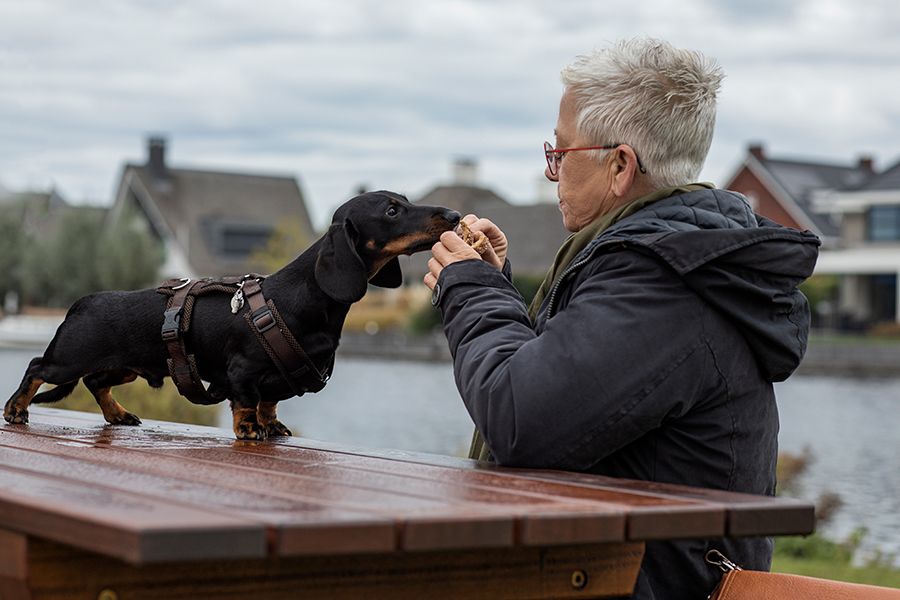
And what of the argument that humans shouldn’t breed these dogs at all?
“I think it would be huge shame if we lost these breeds,” says Freeman. “We need to continue research aimed at understanding the disease better, looking for ways to reduce its incidence as well as develop more widely available treatments.”
Advocating for open airways
Across the Department from Freeman is Dr Jane Ladlow, expert in Brachycephalic Obstructive Airway Syndrome (BOAS), a condition that occurs in brachycephalic or ‘short-headed’ breeds. These include French bulldogs, bulldogs, pugs, pekingeses, shih tzus, Japanese chins, boxers and Boston terriers. BOAS is caused by selective breeding for exaggerated features like flat faces which means dogs struggle to breathe.
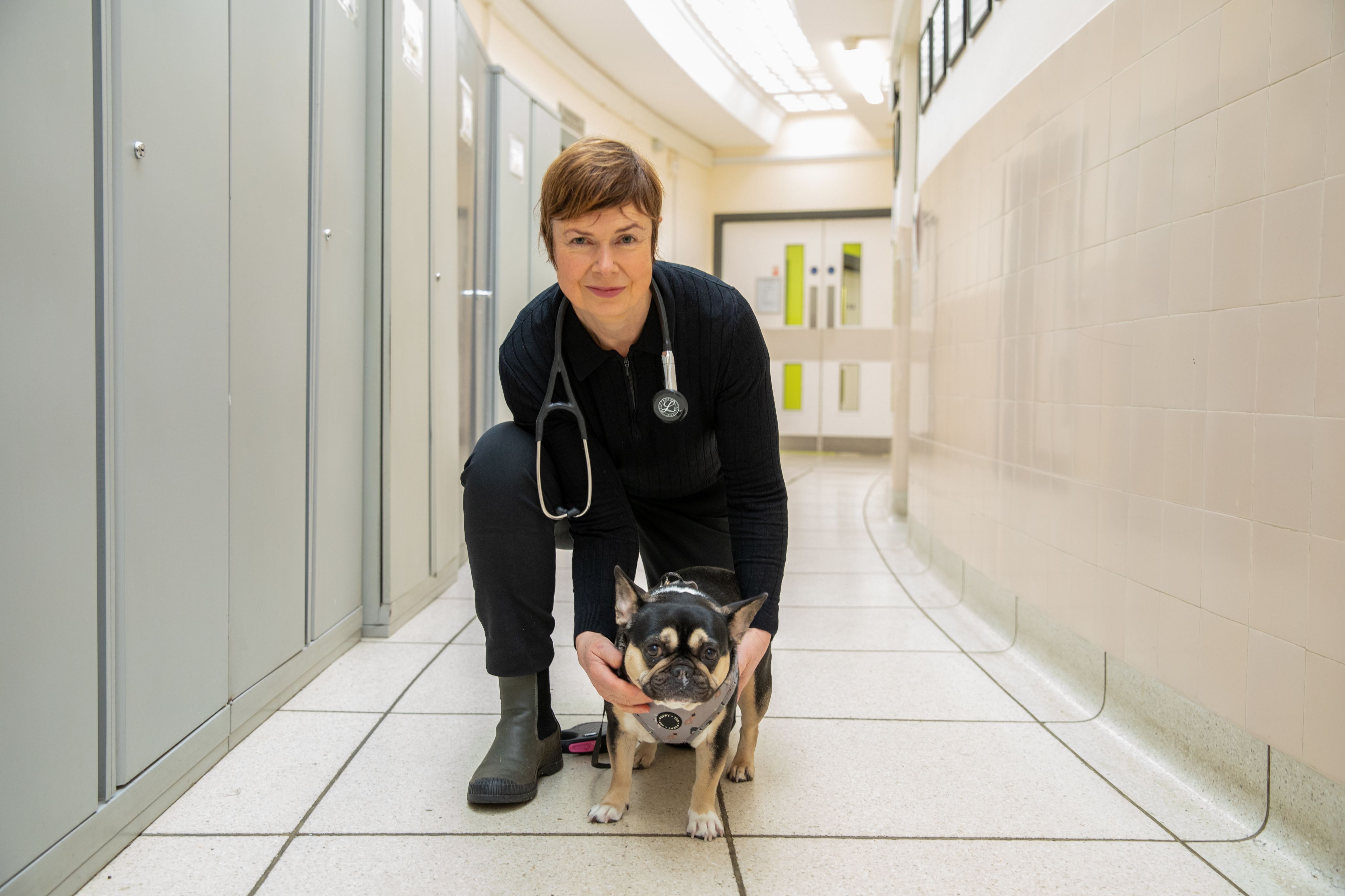
Jane Ladlow with Frenchie, Josie Saxton, by Lloyd Mann
Jane Ladlow with Frenchie, Josie Saxton, by Lloyd Mann
Ladlow recalls operating on a bulldog early in her career and questioning how much the surgery had really improved its breathing which still sounded laboured. This led her down a path that would see her developing the first device to measure dogs’ respiratory function along with a corresponding grading scheme for assessment.
Twenty years later, Ladlow is at the forefront of BOAS research and advocacy for brachycephalic breeds. Her work has led to the revision of breed standards, for example dogs must now have open nostrils and there has been some moderation on stipulation for extremely short sizes of muzzles.
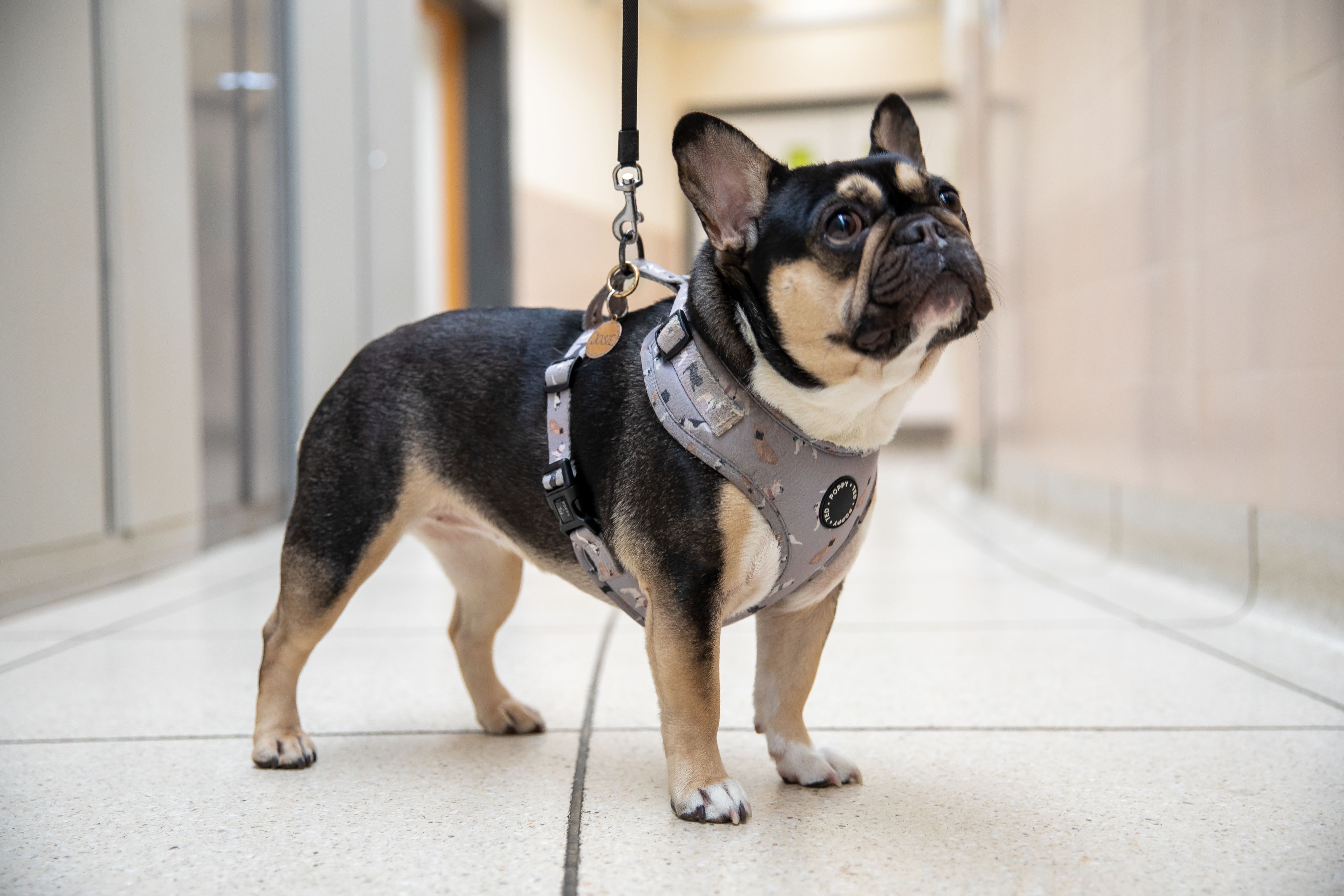
Josie Saxton by Lloyd Mann
Josie Saxton by Lloyd Mann
“These dogs are incredibly popular,” says Ladlow, “They are good friends and companions to people. These animals often hugely improve people’s quality of life but it’s not fair if the dog is suffering – we need to make sure they are healthy.”
Film by artist Alina Radzhput produced in collaboration with Jane Ladlow and Fran Tomlinson as part of Creative Encounters, an engagement initiative run by the University.
Mellersh and her team will be exploring the genetic basis of IVDD and BOAS to support the work of Freeman and Ladlow. She says, “it’s important that we have the genetic and clinical expertise – bringing these two aspects together gives us a unique positioning and strength when it comes to identifying and preventing genetic diseases in dogs, man’s best friend.”
Contact Dr Mellersh to find out more about her work or support the group’s research: cm935@cam.ac.uk
Published 20 April 2023
With thanks to:
Paul Freeman
Jane Ladlow
Cathryn Mellersh
Words:
Charis Goodyear
Photography:
Lloyd Mann
Lorado / E+ via Getty Images
SolStock / E+ via Getty Images
